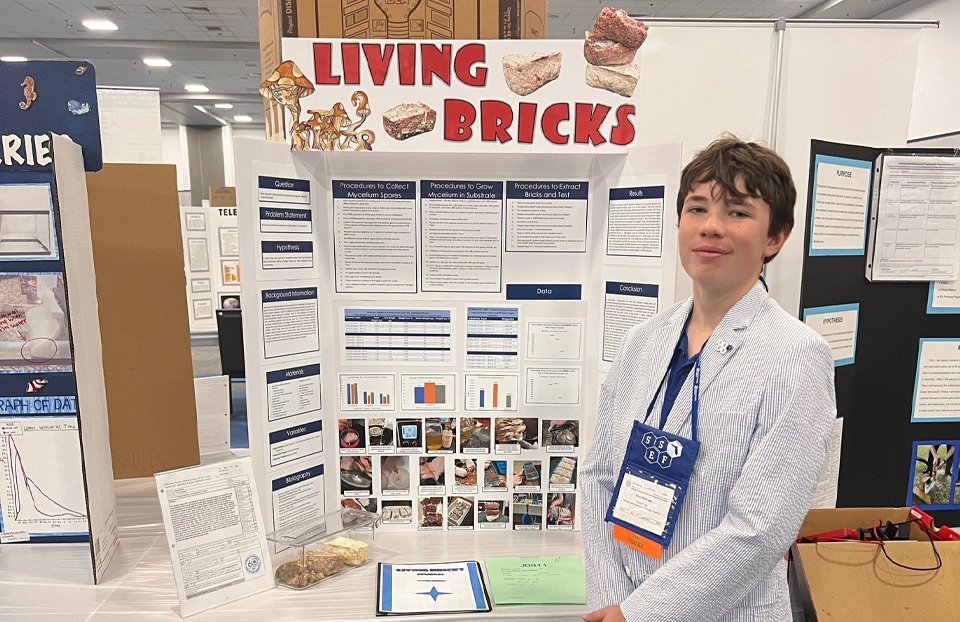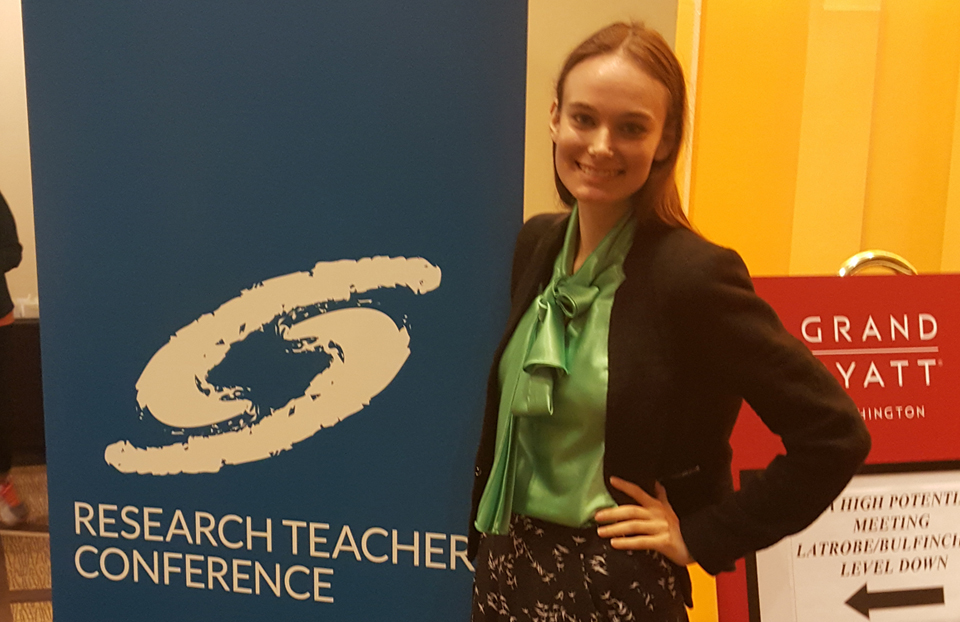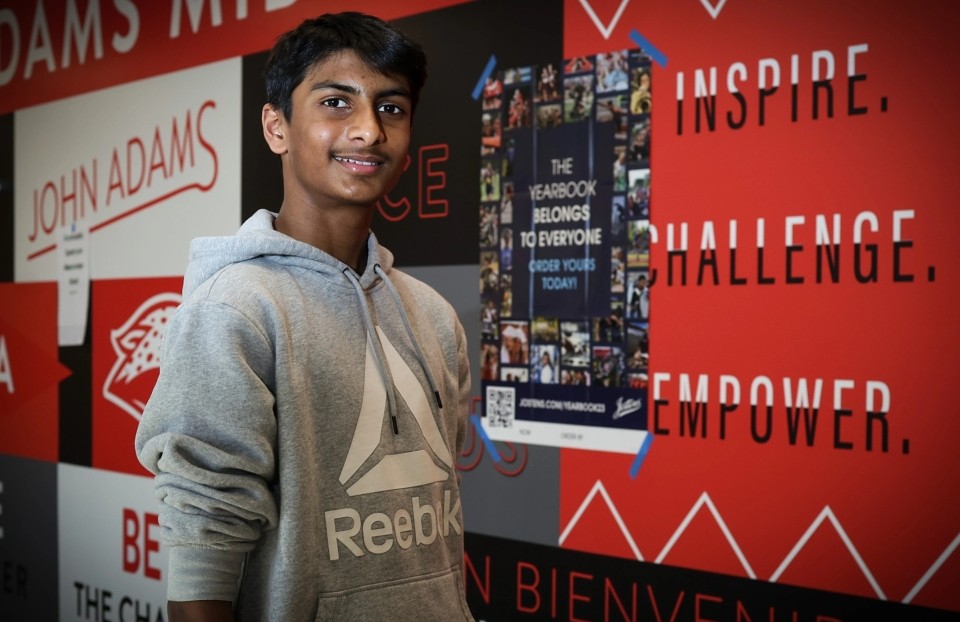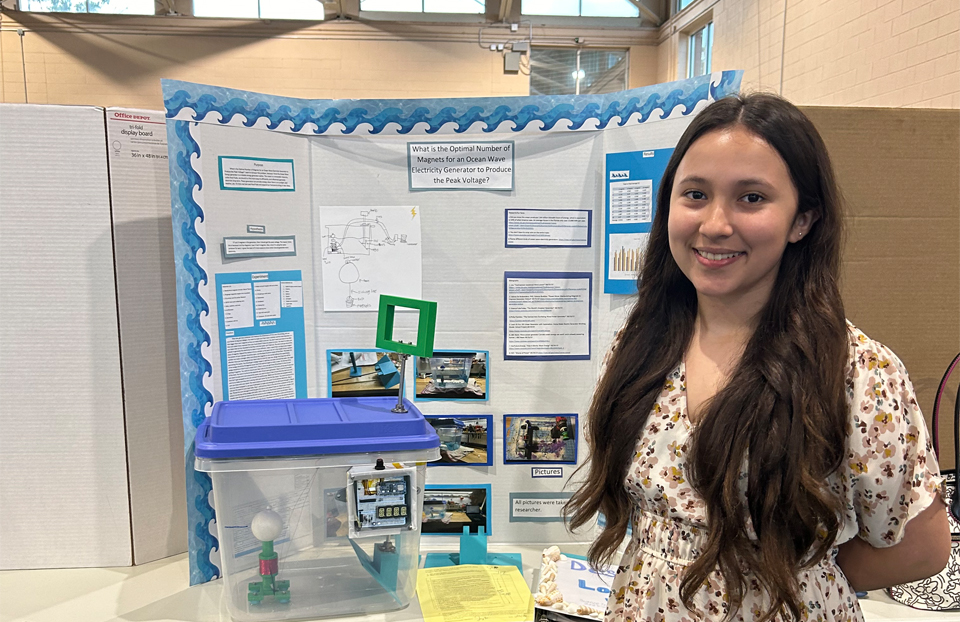Middle schooler offers concrete solutions to limit concrete use, a potential path to lower carbon emissions

For the sixth year, The Lemelson Foundation is giving $100 awards to outstanding young inventors in Society Affiliate Fairs with middle school participants around the country. The prize was created to reward young inventors whose projects exemplify the ideals of inventive thinking by identifying challenges in their communities and creating solutions that will improve lives.
Climate change is a critical issue that scientists worldwide are working on every day. Thai Durham, a sixth grader from Florida, focused his research on finding a way to cut carbon dioxide emissions by reducing the need for concrete.
Thai’s innovative project titled “Living Bricks,” could cut down on carbon dioxide emissions produced by the concrete industry. His bricks are environmentally conscious bricks aiming to partially replace concrete. The cement industry produces 8 percent of the world’s carbon dioxide or about 2.5 billion tons a year. This also leads to topsoil damage, which then pollutes waterways around the globe.
“Our world is my inspiration,” Thai said. “My generation is already experiencing the effects of drastic climate change accelerated by factors that humans have caused. It’s our responsibility to slow down the negative effects on our Earth.”
In his work, Thai tested three substrates—wood chips, horse manure and sawdust—covered in mycelium, the root system of a mushroom. Mycelium is a unique structure of fungi that is versatile with many undiscovered applications. Beyond construction, it has many uses: it floats, is fireproof, waterproof and research has even shown that it can be pest-resistant.
He hypothesized that using wood chips as a mycelium base would produce the strongest mycelium brick compared to other substrate combinations. However, his results revealed that the wood chips broke faster due to the moisture content they retained, and the sawdust bricks that could hold the most weight. Thai’s favorite part of the project—and what he found most difficult—was producing a mycelium brick from scratch. He chose oyster mushrooms due to their rapid growth and availability.
If he were to do this assignment again, Thai would use a weathering lab and compression testing machine to test the bricks’ durability.
Thai expressed deep gratitude to his mother for supporting him with purchasing materials and equipment for this project.
“A lot of the expenses came from figuring out the best method to create the bricks, so there was a lot of trial and error,” Thai said. “Now that I’ve worked out the process, I believe I could significantly reduce the costs if I were to make them again.”
While there was a lot of trial and error, Thai said the feeling of the project working in the end was incredibly rewarding and nothing like he had experienced before. After nights and weekends, his idea was brought to life.
“Solving problems, figuring things out on my own, and seeing it all come together made all the hard work worth it,” Thai said. “It gave me a new appreciation for how challenging, yet amazing scientific discovery can be.”
Winning the Lemelson Early Inventor Prize fills Thai with pride—an achievement he once only dreamed of reaching in the STEM world.
His ambition to improve the environment doesn’t stop at construction production. He also hopes to research playground mulch and develop a safer alternative to the highly flammable rubber mulch commonly used today.


